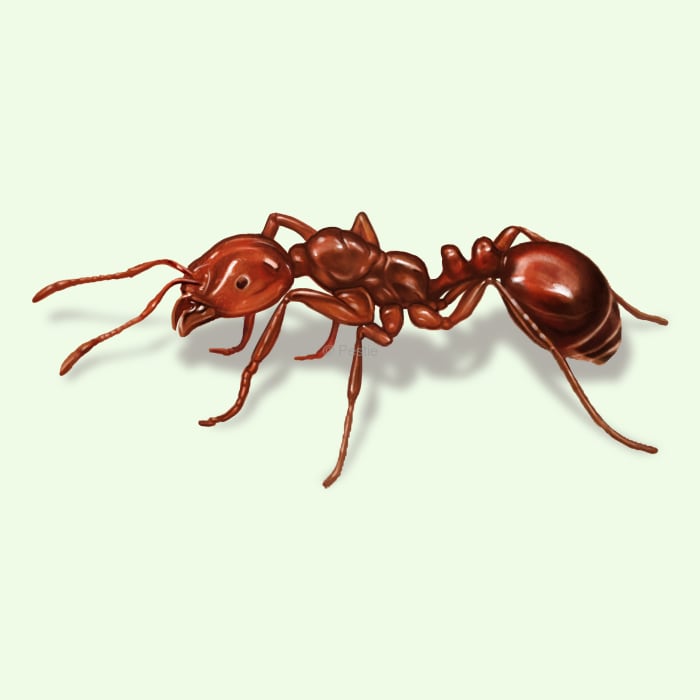How to identify and get rid of fire ants

Fire in the hole! Fire ants on the march
What’s small, usually red, creates rafts of pain, and stings like burning fire? If you guessed fire ants, then you’d be correct!
Fire ants are an ant pest that has become a big problem for southern states in the US. They can easily turn a simple walk or relaxing moment in your yard, into a painful experience.
These ants aren’t native to the US and they can disrupt ecosystems and cause issues for both rural and urban towns. They build large, dome-shaped mounds in sunny areas and are quick to defend their nests if disturbed. If it floods, the ants form living rafts and can float on the water. However, if an unlucky bystander comes into contact with this fire ant raft, they’ll get several stings to remind them to stay away.
While most ants will bite and then sting acid onto your skin, fire ants bite to attach themselves to you, and then will proceed to sting you with their stingers.
How to identify fire ants
Fire ants are small, reddish-brown insects with a distinct two-segmented waist. They are notorious for their aggressive behavior and painful sting. You’ll often find fire ants in large, dome-shaped mounds made of loose soil, particularly in sunny areas. If you disturb their nest, fire ants will swarm aggressively, delivering painful stings that can result in red welts or pustules.
How big are fire ants?
Fire ants range in size from 1/8 to 1/4 inch long.
Where do fire ants live?
Fire ants are primarily found in the southeastern United States, but their range has expanded to other warm, southern states due to their ability to thrive in various conditions.
You’re most likely to find fire ants outdoors, especially in sunny, open areas like lawns, gardens, and pastures. However, they can occasionally enter homes in search of food or during extreme weather conditions.
How to get rid of fire ants
It can be hard to get rid of fire ants once and for all from where you live, and if you do try to take out a colony, you should do so with extreme caution. Messing with a fire ant colony can be dangerous and painful for any homeowner.
Soapy water: Drenching a colony with dish soap is often a way to kill a colony. Just like boiling water, this isn’t always 100% effective.
Maintaining a clean yard: Regularly mow the lawn and remove debris to make your yard less attractive to fire ants looking to establish a colony.
To keep ants out of your home, make sure to seal up any cracks or gaps around your house. Additionally, the best method is a solution like Pestie. Try applying a perimeter spray around your home and property. Pestie offers a pro-grade DIY solution that can help you achieve a pest-free home.
Treat fire ants with Pestie
If you're still having trouble keeping fire ants away, the best option is to use a pro-grade, effective pest control solution like Pestie.
Pestie is a do-it-yourself pest control solution that's specially designed to keep fire ants and other pests away from your home.
With Pestie, you can rest easy knowing that your living space is protected and free of creepy crawlies. And the best part? It's designed for people, pets, and the planet, so you can say goodbye to harsh chemicals and hello to peace of mind!
- Save hundreds compared to traditional annual pest plans
- People, pet, and planet-friendly
- Pro-grade customized formulas
Quick facts
How dangerous are Fire Ants?
High danger risk
Fire ants are considered dangerous due to their aggressive nature and painful stings, which can cause allergic reactions for some people. If the reaction is strong enough, a person can go into anaphylactic shock.
- Scientific name
Solenopsis Invicta
- Other common names
Red Imported Fire Ants, Red Ants
- Colors
reddish-brown
- Life span
Workers – 2-8 weeks; queens – 1+ years
- Diet
Omnivorous – insects, honeydew, sweets, seeds, small animals
The red-imported fire ant contributes to about $6 billion in expenses for medical treatment, agricultural damage, and control measures.








